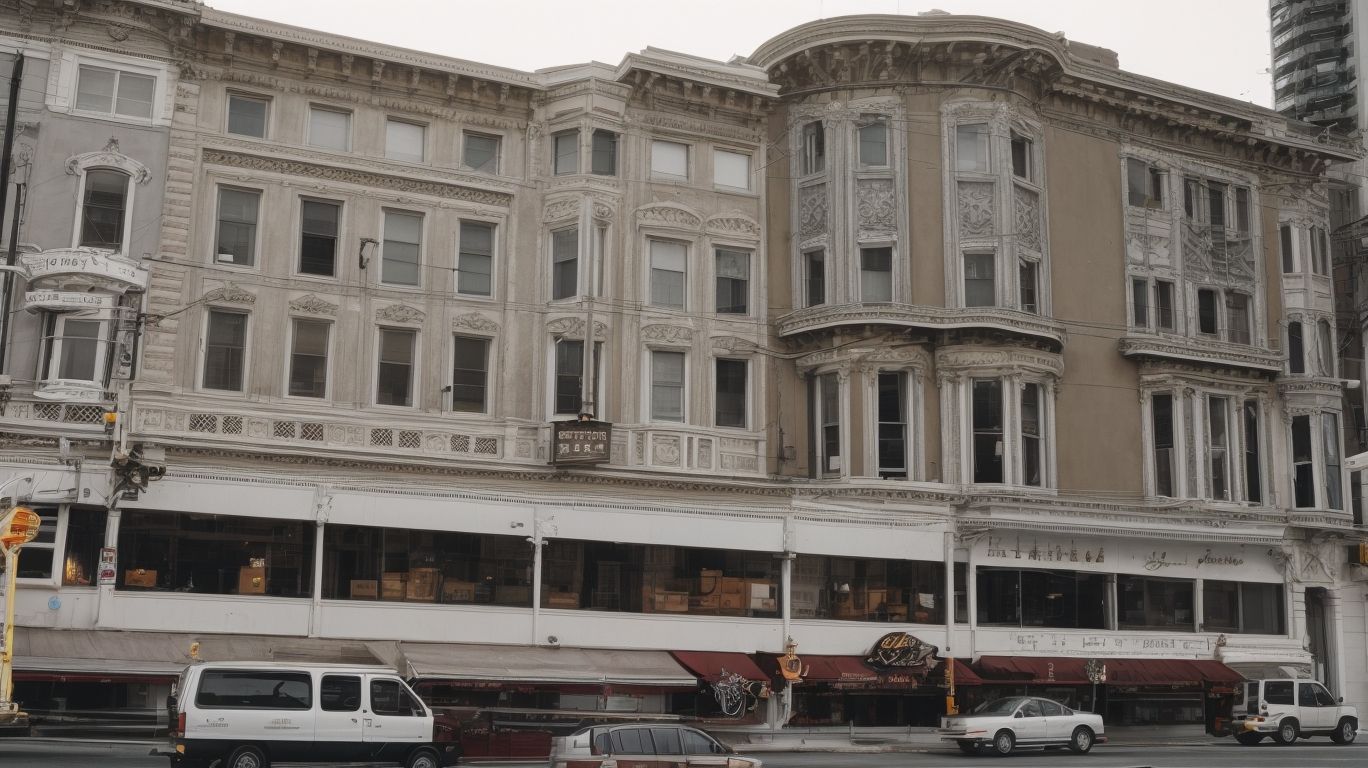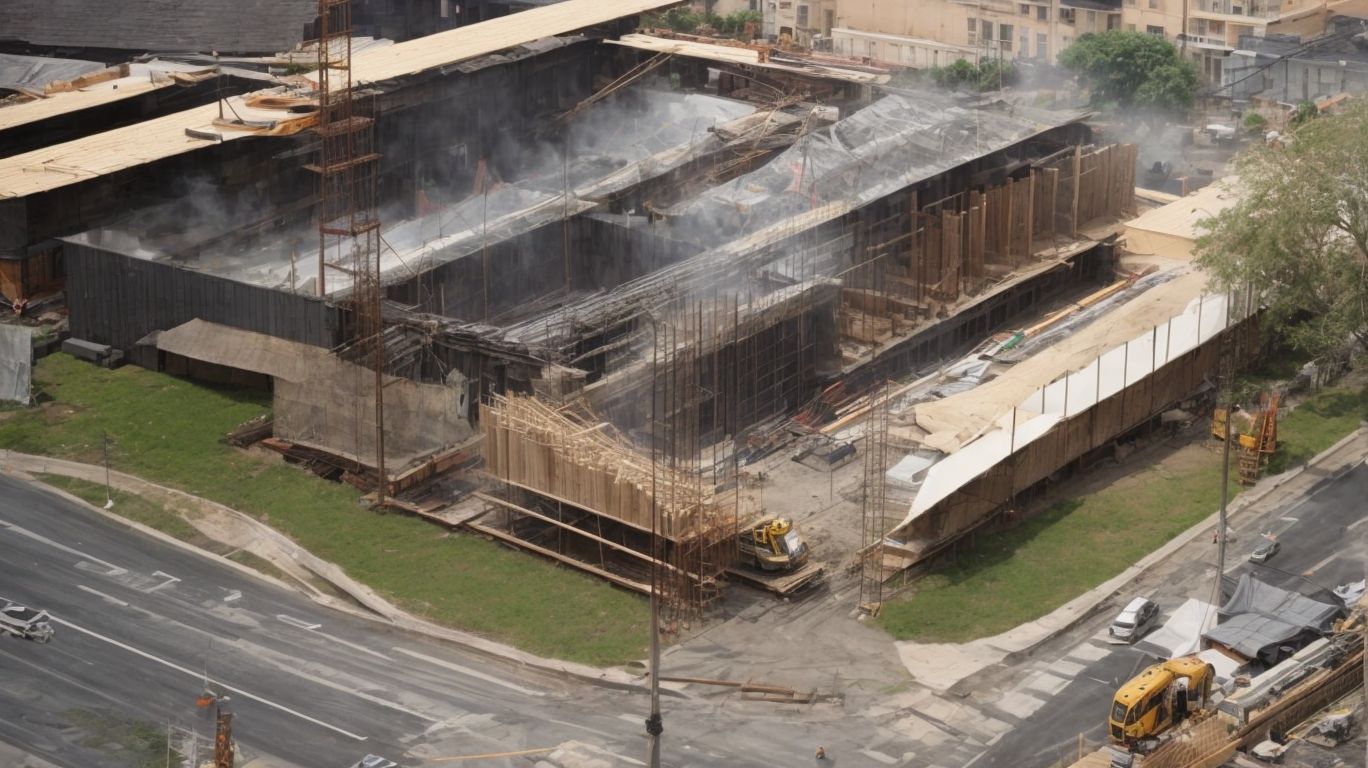
Building Resilience: Soft-Story Retrofit in San Francisco Explained
In earthquake-prone regions like San Francisco, building resilience is of paramount importance. Soft-story retrofitting has emerged as a crucial solution to mitigate the seismic risk faced by vulnerable structures, particularly in the context of soft-story buildings. This comprehensive guide aims to unravel the concept of soft-story retrofit, its significance in San Francisco, seismic risk assessment, the process involved, associated benefits, mandatory requirements, cost implications, timeline, responsibilities, and preparatory measures for building owners.
By delving into these crucial aspects, this article seeks to equip readers with a thorough understanding of soft-story retrofit, empowering them to make informed decisions about enhancing the structural safety and resilience of their properties.
What is Soft-Story Retrofit?
Soft-Story Retrofit is a seismic retrofitting technique designed to strengthen structures and enhance building safety against earthquake risks.
It plays a crucial role in mitigating seismic hazards by focusing on the vulnerable ground floor of buildings, typically found in older wood-frame structures. This technique involves reinforcing the lower levels to improve the building’s ability to withstand lateral forces during an earthquake. By complying with construction regulations and standards, Soft-Story Retrofit ensures that buildings meet safety requirements and reduce the risk of collapse.
The engineering analysis involved in this process assesses the structural integrity, load distribution, and potential points of weakness, guiding the implementation of targeted strengthening measures to enhance the overall safety of the structure.
Why is Soft-Story Retrofit Important in San Francisco?
Soft-Story Retrofit holds significant importance in San Francisco due to the city’s seismic vulnerability, necessitating robust building resilience measures to enhance seismic performance.
With its location near the San Andreas Fault, San Francisco faces significant seismic risks, making it crucial for the city to prioritize strategies that can mitigate the impact of earthquakes. Soft-Story Retrofit plays a vital role in strengthening buildings, particularly those with weak ground floors, to ensure their resilience against seismic forces. By implementing effective retrofit measures, buildings in San Francisco can better withstand potential earthquake-induced structural damage, safeguarding lives and property within the city.
What is the Seismic Risk in San Francisco?
San Francisco faces substantial seismic risk, necessitating comprehensive earthquake preparedness and hazard mitigation strategies, including seismic strengthening measures.
This vibrant city is situated on the notorious San Andreas Fault, making it highly susceptible to major earthquakes. The potential for a significant seismic event in the region poses a serious threat to the city’s infrastructure, residential areas, and overall safety. As a result, seismic strengthening, such as retrofitting buildings and infrastructure, plays a crucial role in reducing the potential impact of earthquakes. Implementing such measures is essential for safeguarding lives and minimizing the devastation caused by seismic activities in San Francisco.
What is a Soft-Story Building?
A Soft-Story Building is characterized by structural deficiencies that result in vulnerability to seismic events and pose significant building vulnerability.
These buildings typically feature a ground floor with large openings for parking or commercial space, creating a weak point. During an earthquake, the upper stories can sway and collapse onto the open ground floor, leading to a potential for extensive damage. Factors contributing to vulnerability include the building’s age, construction materials, and its location in a seismic zone.
As a result, the implications of building vulnerability associated with soft-story structures can be devastating, highlighting the importance of retrofitting and strengthening measures to enhance their resilience.
How Does Soft-Story Retrofit Work?
Soft-Story Retrofit involves a comprehensive retrofit process that includes engineering analysis, structural assessment, and the implementation of specific structural upgrades.
This process begins with a thorough engineering analysis to evaluate the vulnerabilities of the soft-story building. Structural engineers assess the building’s current condition and identify any weaknesses that could potentially lead to failure during seismic events.
Once the vulnerabilities are identified, the next step involves formulating a detailed retrofit plan to strengthen the building’s structural integrity. This may include adding shear walls, steel frames, or other reinforcement techniques to improve the building’s overall stability and resistance to lateral forces.
Throughout the retrofit process, careful attention is paid to ensuring that the structural upgrades are seamlessly integrated into the existing building design while providing the necessary support to prevent future structural vulnerabilities.
What are the Benefits of Soft-Story Retrofit?
Soft-Story Retrofit offers various benefits, including:
- Enhanced community safety
- Structural reinforcements
- Mitigation of seismic hazards through effective retrofitting measures
This method promotes the safety and resilience of neighborhoods by addressing the vulnerability of older buildings with weak ground floors, making them more resistant to earthquakes. By implementing structural enhancements, such as reinforced walls and new steel frames, Soft-Story Retrofit significantly reduces the risk of building collapse during seismic events. This proactive measure not only protects the occupants but also contributes to the overall disaster preparedness and long-term stability of the community.
Increases Building Safety
Soft-Story Retrofit significantly increases building safety by implementing robust measures for strengthening structures and adhering to resilient construction practices.
This proactive approach involves reinforcing vulnerable areas like ground-level parking and open first floor spaces to minimize the risk of collapse during seismic events, thus safeguarding occupants and preserving property. By introducing robust structural reinforcements such as shear walls, moment frames, and foundation upgrades, buildings attain greater resilience against potential structural failures, reducing the overall vulnerability and ensuring enhanced safety standards.
Protects Against Earthquakes
Soft-Story Retrofit effectively protects buildings against earthquakes by addressing seismic hazards, enhancing building stability, and ensuring compliance with city ordinances for seismic resilience.
It plays a crucial role in minimizing the risk of collapse during seismic activity by reinforcing the vulnerable areas of a building, such as open parking spaces, large windows, or weak first floors. This retrofitting method significantly improves the overall structural integrity, reducing the potential for damage and injuries. It helps buildings meet the necessary safety standards set by local governing bodies, ensuring that they can withstand and remain functional after an earthquake.
Preserves Affordable Housing
Soft-Story Retrofit plays a crucial role in preserving affordable housing by ensuring compliance with construction regulations and enhancing the structural integrity of vulnerable buildings.
This process involves reinforcing the lower story of a building to better withstand the lateral forces experienced during seismic events, making it a cost-effective solution for improving the safety and stability of older structures. By implementing Soft-Story Retrofit, cities can ensure that affordable housing options remain available while also mitigating the risk of structural failure in the event of an earthquake, ultimately contributing to the overall resilience and sustainability of communities.
Reduces Property Damage and Loss
Soft-Story Retrofit effectively reduces property damage and loss through improved seismic performance and the implementation of seismic strengthening measures.
This process involves reinforcing the lower floors of a building to enhance its ability to withstand earthquakes, thereby minimizing the potential for structural failure and collapse. By addressing the vulnerability of open frontages, such as ground-level parking or commercial spaces, Soft-Story Retrofit plays a vital role in reducing the risk of damage and loss during seismic events.
Through this approach, property owners can proactively protect their investments and ensure the safety and resilience of their structures.
What are the Requirements for Soft-Story Retrofit in San Francisco?
The requirements for Soft-Story Retrofit in San Francisco encompass adherence to specific building codes and city ordinances that outline the mandatory standards for seismic resilience.
These measures are crucial for ensuring the safety and stability of buildings, especially in areas prone to seismic activity. Compliance with the regulations aims to minimize the risk of structural damage and potential harm to occupants during earthquakes.
Property owners and developers must engage qualified engineers and contractors to meticulously assess, design, and retrofit soft-story buildings according to the stipulated standards. By fulfilling these requirements, the community can enhance its overall resilience to seismic events, safeguarding both lives and property.
How Much Does Soft-Story Retrofit Cost?
The cost of Soft-Story Retrofit varies based on factors such as retrofitting benefits, the extent of seismic strengthening required, and compliance with construction regulations.
Factors such as the structural condition of the building, the type of retrofitting method chosen, and the availability of skilled labor and materials also influence the overall cost. The benefits of retrofitting, including increased safety, property value, and potential insurance premium reductions, justify the investment.
The scope of seismic strengthening, whether it involves structural modifications, foundation work, or bracing, affects the complexity and cost of the project. Ensuring compliance with building codes and regulations is essential for a successful retrofit, impacting the overall expenditure.
How Long Does Soft-Story Retrofit Take?
The duration of Soft-Story Retrofit depends on various factors, including resilient construction practices, adherence to city ordinances, and the desired seismic performance outcomes.
It typically begins with a thorough evaluation of the building’s structural vulnerabilities and a review of the local building codes to ensure compliance. Once the retrofit design and engineering plans are approved, the actual construction phase can vary depending on the size and complexity of the building. Factors such as securing permits, availability of construction materials, and the coordination of skilled labor all contribute to the overall timeline.
The targeted seismic performance objectives play a critical role in determining the scope of the retrofitting process and the time required to achieve the desired level of resilience.
Who is Responsible for Soft-Story Retrofit in San Francisco?
The responsibility for Soft-Story Retrofit in San Francisco primarily lies with building owners, aiming to address seismic vulnerability and contribute to community resilience.
Their role is crucial in identifying vulnerable soft-story buildings and undertaking retrofitting measures to ensure structural integrity during seismic events. By fulfilling this responsibility, building owners play a vital part in enhancing the overall safety and preparedness of the community.
Retrofitting not only minimizes the risk of potential damages to properties but also helps in safeguarding lives and livelihoods, ultimately contributing to the resilience and sustainability of the city’s infrastructure.
What are the Steps for Soft-Story Retrofit?
- Building assessment and plan development
- The permitting and approval process
- The subsequent phases of construction and inspection
The initial phase of the soft-story retrofit process involves a comprehensive assessment of the building’s structural condition and vulnerabilities. Once the assessment is complete, engineers and architects collaborate to develop retrofit plans tailored to the specific building’s needs.
After the plans are finalized, the next step is to navigate the permitting and approval process, which involves submitting the retrofit plans to the local building department for review and obtaining the necessary permits. With the permits in hand, the construction phase begins, incorporating structural upgrades and reinforcement as outlined in the approved retrofit plans.
Throughout the construction process, regular inspections are carried out to ensure compliance with building codes and standards, ultimately culminating in the completion of the retrofit.
Building Assessment and Plan Development
The initial step in Soft-Story Retrofit involves thorough building assessment, conducting engineering analysis, and identifying specific areas of seismic risk that require mitigation.
This phase is vital to understand the structural vulnerabilities of the building and to develop a robust retrofitting plan. Engineers utilize advanced tools to assess the building’s capacity to withstand seismic forces and identify potential weak points. By analyzing factors such as soil condition, building materials, and historical seismic data, they can pinpoint areas in need of reinforcement. This comprehensive approach ensures that the retrofitting plan is tailor-made to address the unique seismic risks of the specific building.
Permitting and Approval Process
Following the assessment, the permitting and approval process for Soft-Story Retrofit involves navigating city ordinances and adhering to construction regulations to secure the necessary approvals for the retrofitting project.
This process encompasses several procedural requirements, including the submission of detailed construction plans, documentation of engineering analyses, and compliance with seismic upgrade standards. It is crucial to engage with local authorities to understand the specific guidelines and protocols, ensuring that the retrofitting project aligns with the city’s safety and structural regulations.
Thorough preparation and meticulous attention to these procedural requirements are essential to facilitate a smooth approval process and timely commencement of the retrofitting efforts.
Construction and Inspection
The final phases of Soft-Story Retrofit encompass the actual construction activities and subsequent inspection processes to validate the implementation of structural reinforcements and achieve the desired seismic performance standards.
During the construction phase, builders focus on implementing resilient construction practices by integrating appropriate structural reinforcements. This involves carefully following engineering designs to ensure that the building’s soft-story weaknesses are effectively addressed. Rigorous inspection processes then become critical to validate that the construction aligns with seismic performance standards.
This includes thorough examinations of the newly reinforced elements, such as shear walls and moment frames, to guarantee their ability to withstand seismic forces and enhance the building’s overall resilience.
How Can Building Owners Prepare for Soft-Story Retrofit?
Building owners can prepare for Soft-Story Retrofit by focusing on understanding seismic performance objectives, implementing hazard mitigation strategies, and embracing building resilience measures.
By familiarizing themselves with the seismic performance objectives, building owners can gain insight into the specific vulnerabilities that their structures may face during an earthquake. Implementing effective hazard mitigation strategies involves evaluating the potential risks and identifying suitable retrofitting measures to enhance the building’s resilience. Embracing building resilience measures is crucial as it ensures the long-term durability and safety of the structure, creating a more robust and secure environment for occupants and assets.




No Comments